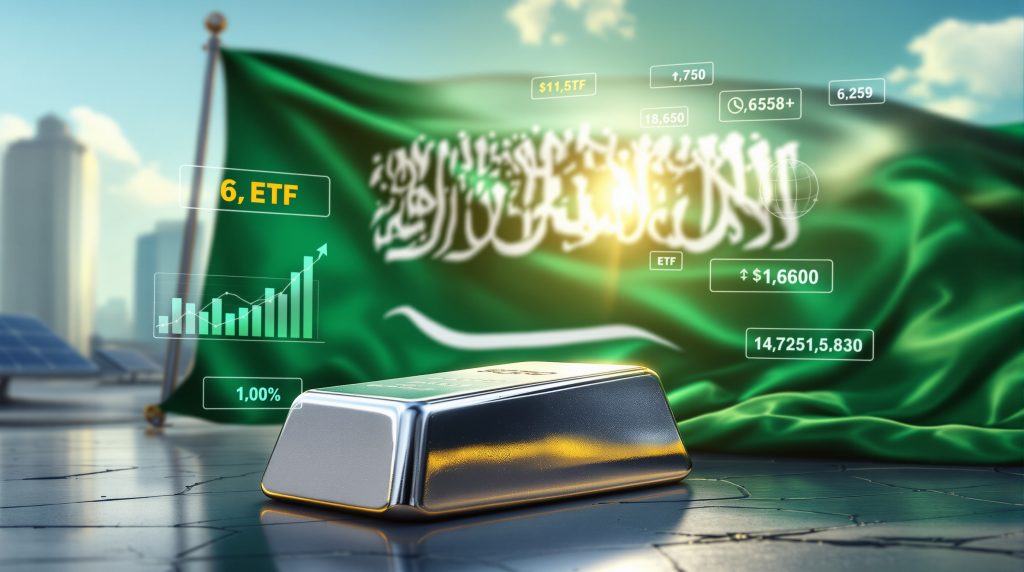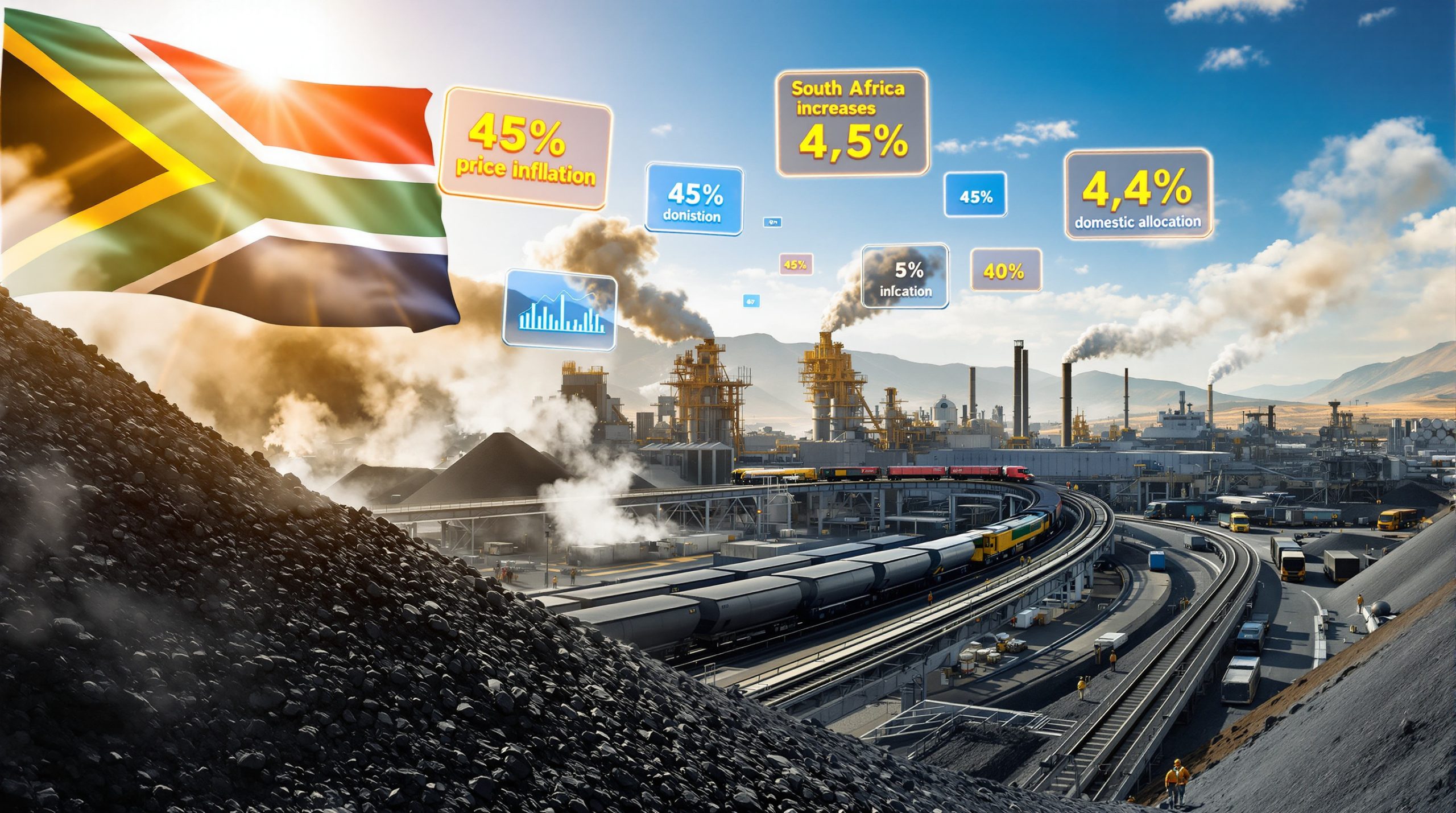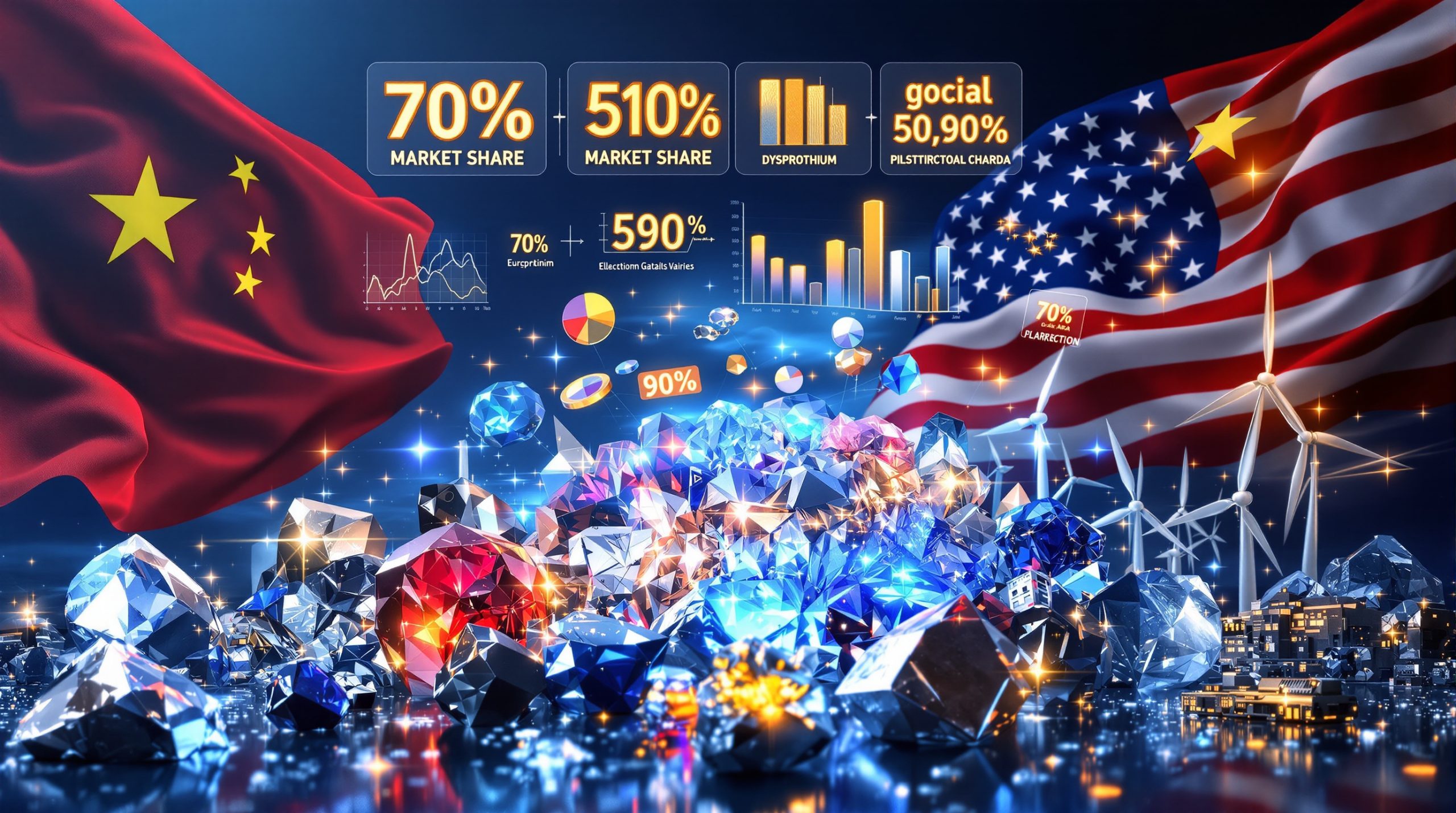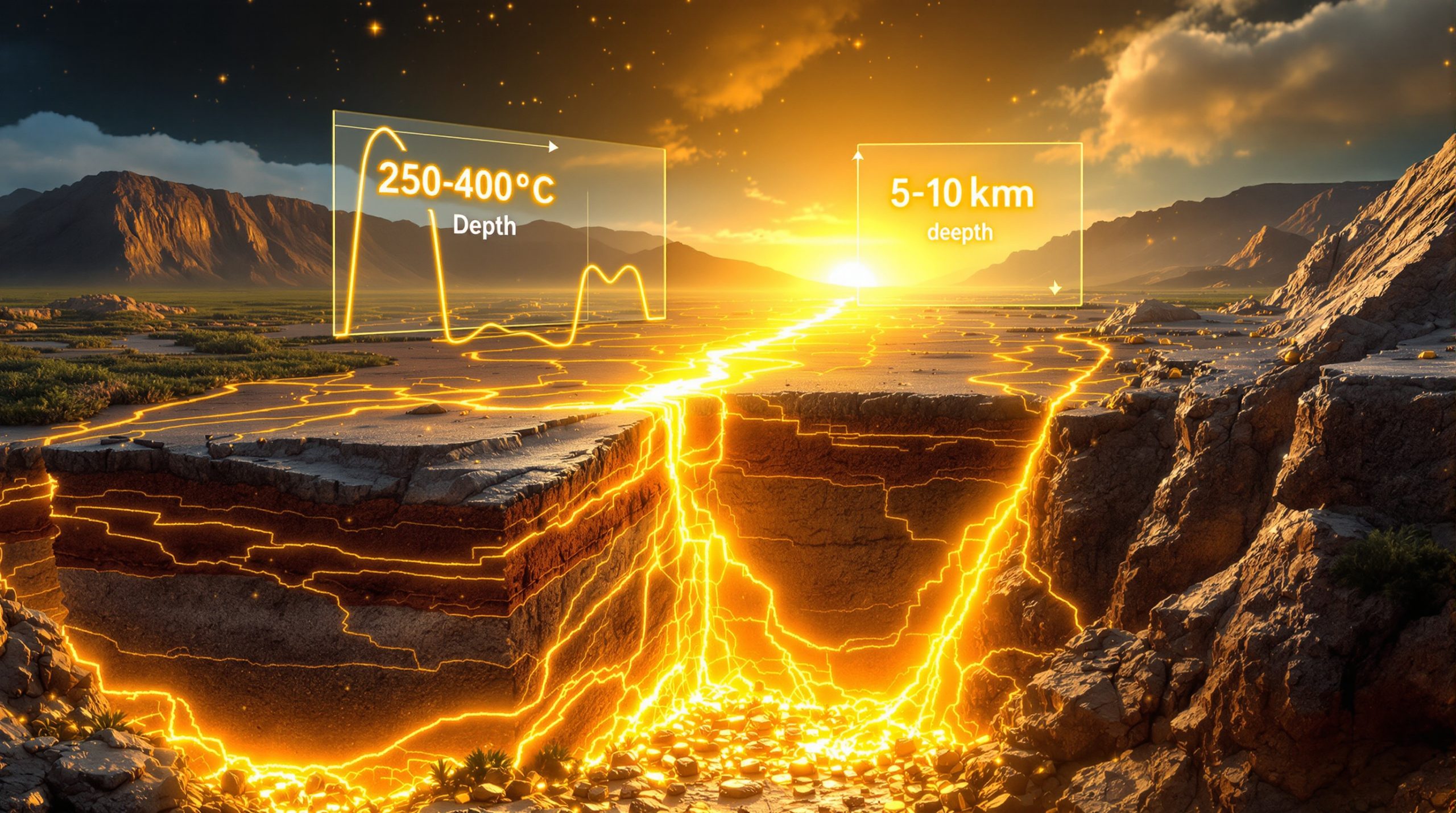Understanding Saudi Arabia's Growing Interest in Silver
What is driving Saudi Arabia's recent silver investments?
Saudi Arabia has recently made a strategic pivot toward silver investments as part of its broader economic diversification strategy. This move represents a calculated approach to balancing traditional reserve assets with emerging opportunities in precious metals markets. The kingdom's interest stems from silver's dual nature as both an industrial metal essential for future technologies and as a store of value during economic uncertainty.
According to the World Silver Survey 2024, global silver investment demand reached 329.8 million ounces in 2023, representing a 7% increase year-over-year, highlighting the growing institutional interest that Saudi Arabia is participating in.
How significant is Saudi Arabia's silver investment?
While modest in comparison to the kingdom's overall reserves, Saudi Arabia has allocated approximately $40 million toward silver exposure primarily through exchange-traded funds (ETFs). This investment signals a strategic rather than merely tactical approach to precious metals diversification, particularly as global economic uncertainties persist and silver supply deficits continue to grow.
The investment, though relatively small compared to Saudi Arabia's total reserves of approximately $442 billion managed by SAMA, represents an important shift in diversification strategy beyond traditional assets.
Saudi Arabia's Silver Investment Strategy
How is Saudi Arabia gaining exposure to silver markets?
Rather than directly purchasing physical silver bullion, Saudi Arabia has taken a more sophisticated approach through financial instruments:
- Acquisition of 932,000 shares in the iShares Silver Trust (SLV), a physical silver-backed ETF
- Purchase of 203,700 shares in the Global X Silver Miners ETF (SIL), providing exposure to silver mining companies
- Management of these investments through the Saudi Arabian Monetary Authority (SAMA)
This approach prioritizes liquidity and market flexibility while avoiding the logistical challenges of physical silver storage and security.
Why choose ETFs over physical silver holdings?
The preference for ETFs over direct physical silver ownership offers several strategic advantages:
| ETF Investment Benefits | Physical Silver Challenges |
|---|---|
| Enhanced liquidity for rapid position adjustments | Storage and security costs (0.5-1.5% annually) |
| Avoidance of physical delivery logistics | Insurance requirements (0.1-0.3% annually) |
| Diversified exposure across mining operations | Verification and authentication needs ($500-2,000 per shipment) |
| Simplified regulatory compliance | International transport complexities |
| Lower transaction costs | Limited divisibility for partial sales |
This approach allows Saudi Arabia to maintain flexibility while still gaining meaningful exposure to silver price movements and the silver mining sector.
Historical Context of Saudi Precious Metals Interest
Has Saudi Arabia shown interest in silver before?
Contrary to some market narratives suggesting this is an entirely new development, Saudi Arabia has a long-established relationship with silver investments:
- Saudi royal family members and wealthy individuals have historically allocated portions of their portfolios to silver
- During the early 2000s (2000-2002), Saudi entities acquired approximately 50 million ounces of physical silver
- In the late 1970s and early 1980s, Saudi royal family members explored silver-backed bond opportunities
This historical context demonstrates that the current investment represents a continuation and evolution of existing interest rather than a sudden discovery of silver's potential value.
How does this compare to Saudi Arabia's gold strategy?
Saudi Arabia's approach to gold differs significantly from its silver price strategies due to international monetary conventions:
- Gold is recognized as a legitimate monetary reserve asset by central banks globally
- In 2008, Saudi Arabia added 5.8 million ounces of gold to its monetary reserves
- This gold addition was a transfer from royal family holdings to the central bank
- Silver, by contrast, is not recognized as an official monetary reserve asset due to market size and liquidity constraints
According to the World Gold Council, Saudi Arabia currently holds 323.1 tonnes (10.4 million ounces) of gold reserves as of Q3 2024, ranking it 16th globally among central bank gold holders. This official recognition of gold, but not silver, as a reserve asset explains the different investment approaches.
Strategic Implications for Silver Markets
What does Saudi interest mean for global silver prices?
The Saudi investment represents one component of growing institutional interest in silver that has contributed to price momentum:
- Silver prices reached $34.86 per ounce in May 2024, marking an 11-year high
- Market analysts have projected potential moves toward $39-40 per ounce
- Institutional participation reduces silver market stress by introducing longer-term investment horizons
- Saudi involvement may encourage other sovereign wealth funds to consider similar allocations
While the Saudi investment alone is not large enough to move markets significantly, it represents a potential trend toward greater sovereign wealth participation in silver markets.
How does this fit into broader precious metals trends?
The Saudi silver investment aligns with several major trends in global precious metals markets:
- Diversification beyond gold – Sovereign and institutional investors expanding precious metals exposure
- Industrial demand growth – Recognition of silver's critical role in renewable energy and technology
- Monetary uncertainty hedge – Precious metals allocation during periods of global economic instability
- Supply constraints awareness – Growing recognition of limited new silver mining development
- Strategic resource positioning – Nations securing access to industrially important commodities
These trends collectively support continued institutional interest in silver as both an investment asset and strategic industrial resource. The World Silver Survey 2024 reported that the silver market experienced its fourth consecutive annual deficit in 2023, with total demand exceeding supply by 142.1 million ounces.
Saudi Vision 2030 and Silver Investment Integration
How does silver investment support Saudi Vision 2030 objectives?
The silver investment strategy aligns with several key pillars of Saudi Arabia's Vision 2030 economic transformation plan:
- Economic diversification – Reducing dependence on oil revenues through varied investment streams
- Financial sector development – Building sophistication in Saudi Arabia's investment capabilities
- Industrial growth support – Positioning for technologies requiring silver inputs
- Renewable energy transition – Securing resources needed for solar and other clean energy development
- Sovereign wealth optimization – Maximizing returns on national assets through strategic allocation
Saudi Vision 2030 aims to increase non-oil GDP contribution from 16% to 50% by 2030 and grow the private sector's contribution to GDP from 40% to 65%. Silver investment supports these goals by diversifying financial assets while strategically positioning for industrial growth.
What future developments might emerge in Saudi silver strategy?
Based on the current trajectory, several potential expansions of Saudi Arabia's silver strategy could emerge:
- Increased ETF allocations as initial positions prove successful
- Development of physical silver holdings as a complement to ETF exposure
- Direct investment in silver mining operations or development projects
- Creation of domestic silver vaulting and trading infrastructure
- Development of Shariah-compliant silver investment products
- Integration with industrial policy to support domestic manufacturing requiring silver inputs
- Positioning as a regional hub for silver trading and investment
These potential developments would represent a natural evolution from the current ETF-focused approach toward a more comprehensive silver strategy, particularly as Saudi Arabia pursues its ambitious renewable energy target of generating 50% of electricity from renewable sources by 2030.
Silver's Dual Role: Industrial Metal and Investment Asset
Why is silver particularly attractive as a dual-purpose investment?
Silver's unique position at the intersection of industrial demand and investment interest creates distinctive value:
Industrial Applications:
- Essential component in photovoltaic solar panels (20g per panel)
- Critical for electronics manufacturing and circuit boards
- Growing use in medical applications and antimicrobial products
- Required for water purification systems
- Emerging applications in printed electronics and flexible displays
Investment Characteristics:
- Historical monetary role providing familiarity as a store of value
- Relatively small market size allowing meaningful price appreciation
- Portfolio diversification benefits with different risk profile than gold
- Potential supply constraints due to limited primary silver mines
- Accessible entry point compared to gold's higher per-ounce price
This combination of industrial necessity and investment potential creates a compelling case for strategic silver allocation.
How does the industrial-investment balance affect silver's outlook?
The dual nature of silver demand creates a unique market dynamic:
| Industrial Demand Drivers | Investment Demand Drivers |
|---|---|
| Renewable energy expansion | Economic uncertainty |
| Electronics manufacturing growth | Inflation concerns |
| Medical technology development | Currency debasement fears |
| Water purification needs | Portfolio diversification |
| Emerging technology applications | Central bank policies |
According to the World Silver Survey 2024, industrial fabrication accounted for 556.5 million ounces (49% of total demand) in 2023, while investment demand reached 329.8 million ounces (29% of total demand). This balance means silver can potentially benefit from both economic growth scenarios (driving industrial demand) and economic uncertainty (driving investment demand).
Global Context of Institutional Silver Investment
Are other institutions following Saudi Arabia's approach?
Saudi Arabia's silver investment represents part of a broader trend of institutional interest:
- Exchange-traded products globally have added significant silver holdings in 2023-2024
- Private wealth management firms have increased recommended silver allocations
- Technology-focused sovereign wealth funds have shown increased interest
- Mining investment funds have shifted toward silver-focused operations
- Corporate treasury departments have begun exploring precious metals diversification
This collective institutional participation suggests a structural shift in silver market analysis rather than a temporary trend. According to the World Silver Survey 2024, global silver ETFs added 47.2 million ounces in 2023, following additions of 30.7 million ounces in 2022.
How does silver compare to other strategic resource investments?
Saudi Arabia's silver allocation fits within a broader framework of strategic resource positioning:
| Resource | Strategic Value | Investment Approach |
|---|---|---|
| Silver | Industrial/monetary dual role | ETF allocation strategy |
| Gold | Monetary reserve asset | Direct physical holdings |
| Lithium | Battery technology | Mining company investments |
| Copper | Electrification infrastructure | Futures and producer stakes |
| Rare earths | Advanced manufacturing | Supply chain integration |
This context shows how silver represents one component of a comprehensive approach to securing access to strategically valuable resources. The Sovereign Wealth Fund Institute reports that "Alternative assets including commodities and precious metals comprise approximately 3-8% of diversified sovereign wealth portfolios."
FAQs About Saudi Silver Investment
Is Saudi Arabia buying physical silver bullion?
No, Saudi Arabia is not currently purchasing physical silver bullion. Instead, the Saudi Arabian Monetary Authority has acquired shares in silver ETFs, specifically 932,000 shares in the iShares Silver Trust (SLV) and 203,700 shares in the Global X Silver Miners ETF (SIL). This approach provides silver market exposure without the logistical challenges of physical silver storage and security.
How much has Saudi Arabia invested in silver?
Saudi Arabia has invested approximately $40 million in silver-related assets through ETF purchases. While this represents a relatively modest allocation compared to the kingdom's overall reserves, it signals a strategic interest in silver as both an investment asset and industrial metal with future growth potential.
Can Saudi Arabia use silver as an official monetary reserve?
No, Saudi Arabia cannot use silver as an official monetary reserve asset. International central banking agreements recognize gold as a legitimate monetary reserve but consider silver too small and illiquid a market for official reserve status. This is why Saudi Arabia's silver investments are structured as investment fund allocations rather than monetary reserves.
How might Saudi Arabia expand its silver strategy in the future?
Saudi Arabia could potentially expand its silver strategy by increasing ETF allocations, developing physical silver holdings, investing directly in mining operations, creating domestic silver vaulting infrastructure, developing Shariah-compliant silver investment products, and integrating silver with industrial policy initiatives supporting domestic manufacturing.
What impact will Saudi investment have on silver prices?
While Saudi Arabia's current investment alone is not large enough to significantly move silver prices, it represents growing institutional interest that collectively supports silver's price trajectory. If other sovereign wealth funds follow Saudi Arabia's example, the cumulative effect could contribute to sustained price appreciation in a relatively small market.
Conclusion: Saudi Silver Strategy in Perspective
Saudi Arabia's strategic investment in silver through ETF allocations represents a sophisticated approach to precious metals diversification. Rather than a sudden discovery of silver's potential value, this move builds upon decades of Saudi interest in silver while adapting to modern financial markets through liquid investment vehicles.
The investment aligns with Saudi Vision 2030 objectives for economic diversification and positions the kingdom to benefit from both silver's industrial applications in emerging technologies and its potential monetary role during economic uncertainty. While modest in size, the investment signals growing institutional recognition of silver's unique position at the intersection of industrial necessity and investment potential.
As global economic uncertainties persist and industrial demand for silver continues to grow, Saudi Arabia's approach may serve as a model for other sovereign wealth funds seeking balanced exposure to strategic resources with both industrial and monetary dimensions.
Further Exploration:
Readers interested in learning more about strategic silver investments can also explore related educational content, such as CPM Group's YouTube video discussing precious metals markets and Saudi silver investments. This video offers additional perspective on global precious metals trends and investment strategies. For a deeper analysis of how silver fits into broader market dynamics, consider examining the silver market squeeze phenomenon and its impact on global finance.
Want to Spot the Next Major Mineral Discovery?
Discovery Alert's proprietary Discovery IQ model delivers instant notifications when significant ASX mineral discoveries are announced, giving you the opportunity to act before the broader market. Explore how historic discoveries have generated extraordinary returns by visiting our dedicated discoveries page and position yourself for market-leading advantage.




